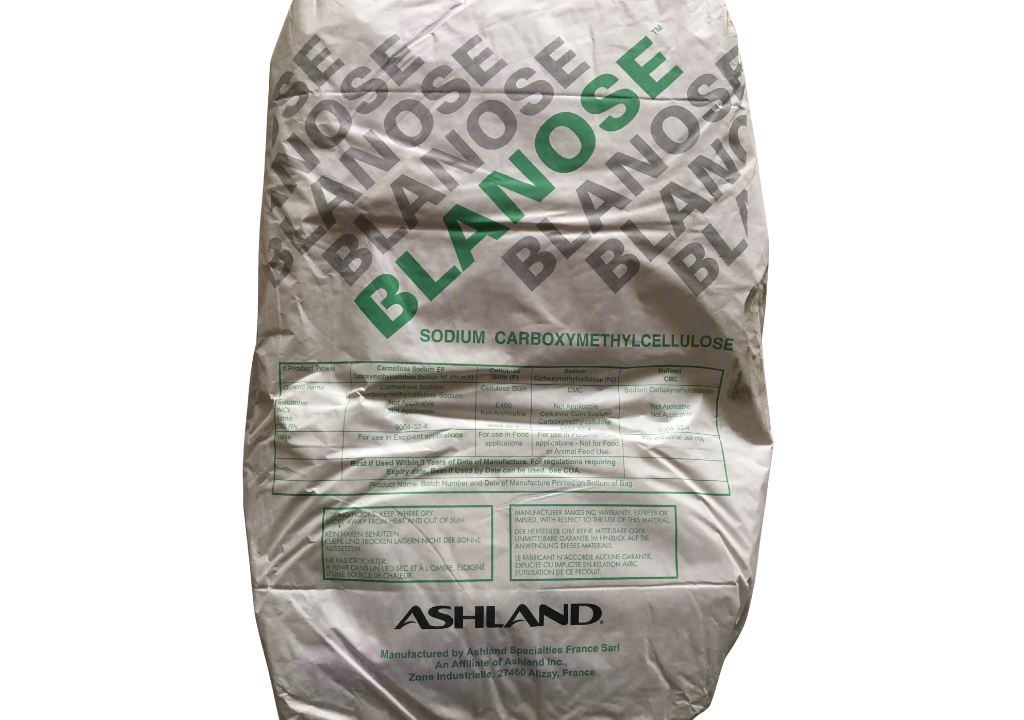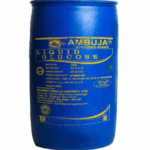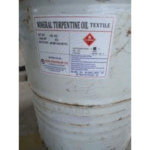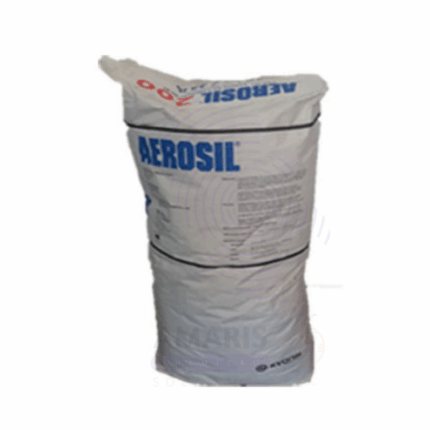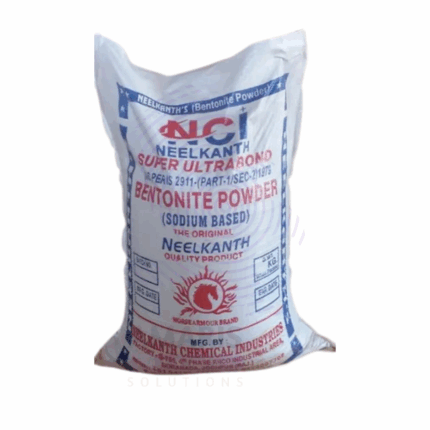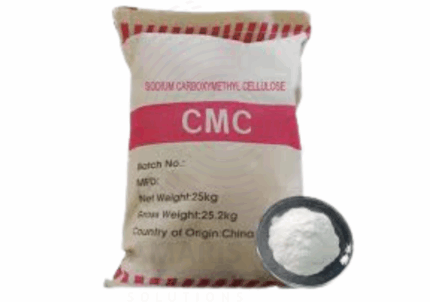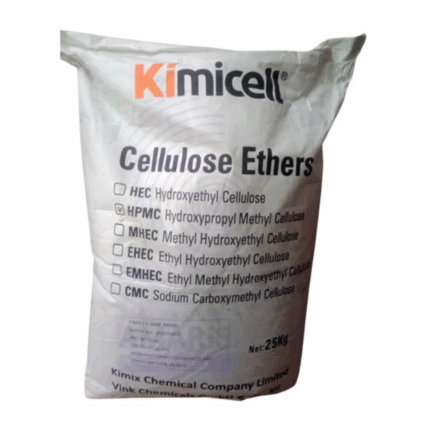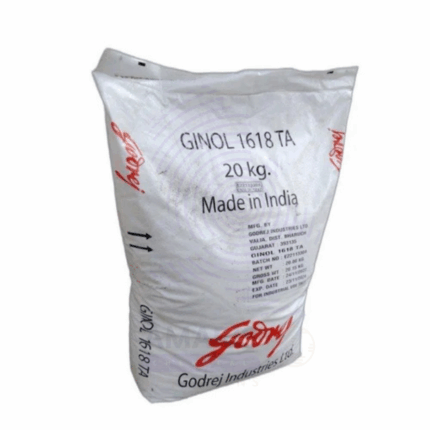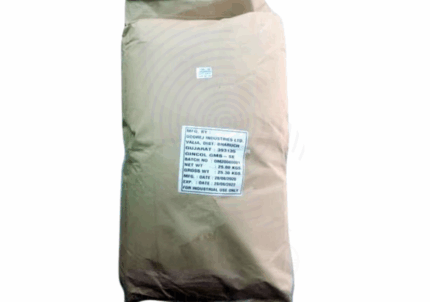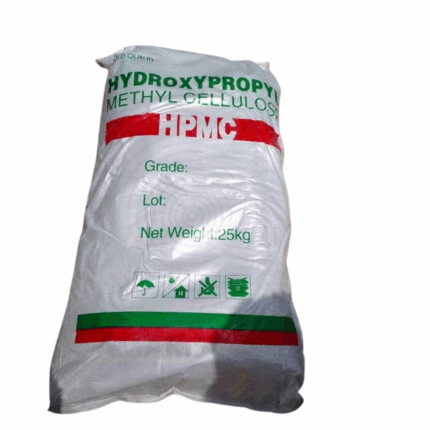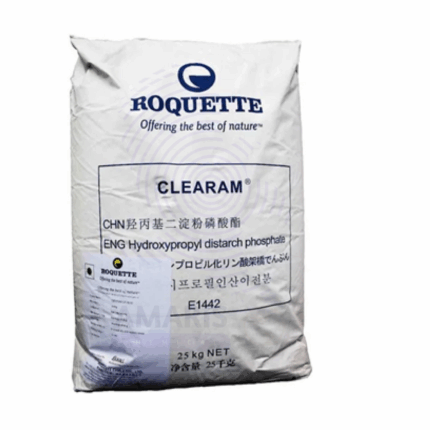CMC Sodium Blanose
Whatsapp Order
CMC Sodium Blanose is a high-purity, pharmaceutical- and food-grade Sodium Carboxymethyl Cellulose (CMC), manufactured under the Blanose® brand by Ashland or equivalent producers. It is a water-soluble, anionic cellulose ether derived from natural cellulose, designed for superior consistency, clarity, and performance. CMC Blanose serves as a thickening agent, stabilizer, binder, film former, and emulsifier in a wide variety of applications. Known for its excellent rheological control and water retention, it is widely used across the food, pharmaceutical, personal care, and industrial sectors, offering reliable performance with batch-to-batch consistency.
Description
Table of Contents
Toggle
CMC Sodium Blanose
Primary Uses
- Food Industry
- Functions as a thickener, stabilizer, and suspending agent in sauces, dressings, syrups, ice creams, and bakery products.
- Prevents ice crystal formation in frozen desserts.
- Improves mouthfeel and emulsion stability in beverages and dairy applications.
- Used as a fat replacer in reduced-fat products.
- Approved under E466 as a food additive (EU); GRAS by FDA.
- Pharmaceuticals
- Used as a binder, disintegrant, and stabilizer in tablets, capsules, suspensions, and gels.
- Improves viscosity and mucoadhesion in oral, topical, and ophthalmic formulations.
- Employed in controlled-release matrices and bioadhesive drug delivery systems.
- Provides film-forming and moisture-retention in wound care products.
- Personal Care & Cosmetics
- Serves as a viscosity enhancer and suspending agent in shampoos, lotions, toothpastes, and creams.
- Forms stable emulsions and helps deliver actives uniformly.
- Enhances texture and spreadability in skin and hair care products.
- Provides a conditioning feel and film-forming benefits.
- Detergents & Cleaners
- Included in laundry and dishwashing detergents as an anti-redeposition agent.
- Provides viscosity control and stabilization in liquid cleaners and gels.
- Compatible with enzymes and surfactants in detergent formulations.
Secondary Uses
- Oil & Gas Drilling
- Used in drilling muds as a viscosity modifier, water loss reducer, and suspension stabilizer.
- Maintains drilling fluid performance under various temperature and pH conditions.
- Construction Materials
- Added to dry mortar, cement, and plaster as a water-retention agent and workability enhancer.
- Reduces cracking and improves bonding properties.
- Adhesives & Coatings
- Functions as a binder and rheology modifier in adhesives and water-based coatings.
- Contributes to film formation and open time control.
- Paper & Textile Industry
- Used in surface sizing, coating, and dye printing processes for paper and textiles.
- Improves surface strength, print quality, and color sharpness.
- Agriculture
- Acts as a suspending agent and emulsion stabilizer in pesticide and fertilizer formulations.
- Used as a soil conditioner for enhanced water retention in arid areas.
- Biomedical Research
- Utilized in hydrogels, wound dressings, and drug delivery systems due to its biocompatibility and gel-forming ability.
KEY PRODUCT FEATURES
1. Basic Identification Attributes
- Chemical Name (IUPAC): Sodium carboxymethyl cellulose
- Common/Trade Name: CMC Sodium Blanose
- CAS Number: 9004-32-4
- HS Code: 3912.31.00
- Molecular Formula: Variable (C₆H₇O₂(OH)₂CH₂COONa)n
- Synonyms:
- Sodium CMC
- Carboxymethylcellulose sodium
- Cellulose gum
- E466 (food additive code)
2. Physical & Chemical Properties
- Physical State: Free-flowing powder or granules
- Color & Odor: White to off-white; odorless, tasteless
- Solubility: Freely soluble in water; insoluble in organic solvents
- Viscosity Range: 10 to 10,000 cps (varies by grade and concentration)
- pH (1% solution): 6.0–8.5
- Moisture Content: ≤10%
- Stability: Stable under normal conditions; hygroscopic
- Loss on drying: ≤10%
3. Safety & Hazard Attributes
- Hazard Class (GHS): Not classified as hazardous
- NFPA Ratings:
- Health: 0
- Flammability: 1
- Reactivity: 0
- Exposure Limits: No established exposure limits
- Toxicity: Non-toxic, non-sensitizing, safe for ingestion in approved applications
- Reactivity: Chemically inert under normal use
4. Storage & Handling Attributes
- Storage Conditions: Store in a cool, dry place in sealed containers
- Container Type: Multi-layer paper bags with PE liners or fiber drums
- Shelf Life: Up to 24 months if kept sealed and dry
- Special Handling: Use dust control methods when handling large quantities
5. Regulatory & Compliance Attributes
- FDA Status: GRAS (21 CFR §182.1745)
- EU Food Additive Code: E466
- USP/NF & BP Compliance: Available in pharma grades meeting compendial standards
- REACH Status: Registered
- Kosher/Halal: Available upon request
- Transportation: Not regulated as hazardous material
- Waste Disposal: Biodegradable; dispose according to local environmental regulations
6. Environmental & Health Impact
- Ecotoxicity: Low; not harmful to aquatic or terrestrial environments
- Persistence: Readily biodegradable
- Bioaccumulation: Not expected
- Carcinogenicity/Mutagenicity: Not classified
- Biodegradability: Fully biodegradable under aerobic conditions
SAFETY HANDLING PRECAUTIONS
Safety Handling Precautions
PPE Recommendations:
- Dust mask
- Safety goggles
- Gloves if handling in bulk
Handling Measures:
- Avoid generating airborne dust
- Use local exhaust ventilation
- Prevent moisture contact with open product
Storage Measures:
- Keep container tightly closed
- Store in cool, dry, ventilated area away from incompatible materials
- Avoid stacking pallets too high to prevent compaction
Hygiene Practices:
- Wash hands thoroughly after handling
- Do not eat or drink while handling
- Maintain cleanliness in storage areas
First Aid Measures
- Inhalation: Move to fresh air; seek medical help if irritation or coughing persists
- Skin Contact: Wash with water and soap; seek attention if rash or irritation occurs
- Eye Contact: Flush eyes with plenty of water for at least 15 minutes
- Ingestion: Non-toxic in small amounts; rinse mouth; seek medical help if discomfort occurs
Firefighting Measures
- Fire Hazards: Combustible in powder form at high temperatures
- Extinguishing Media: Water spray, CO₂, foam, dry chemical
- Special Precautions: Firefighters should wear full protective equipment
- Decomposition Products: CO, CO₂, and other organic vapors when burned
Related products
Aerosil 200
$ 6.21
Bentonite Powder
Bentonite powder is a naturally occurring absorbent clay primarily composed of montmorillonite, a type of smectite clay mineral. It exhibits excellent swelling and water absorption properties, making it highly versatile in industrial and commercial applications. Bentonite forms a gel-like substance when mixed with water, which imparts viscosity and plasticity. It is used extensively for its binding, sealing, and adsorptive characteristics. Its fine powder form allows for easy incorporation in various processes including drilling, foundry, cosmetics, pharmaceuticals, and agriculture.
Carboxymethyl Cellulose Sodium
Carboxymethyl Cellulose Sodium, is a water-soluble anionic cellulose ether derived from natural cellulose. It appears as a white to off-white, odorless, tasteless powder or granule. Known for its excellent thickening, stabilizing, emulsifying, and water-retention properties, CMC is widely used in food, pharmaceutical, personal care, industrial, and detergent applications. It functions by modifying the rheological properties of solutions and suspensions, offering control over viscosity and flow. Its biocompatibility, non-toxicity, and biodegradability make it suitable for both human use and environmentally friendly formulations.
Cellulose Ether
Cellulose ether refers to a group of chemically modified cellulose derivatives where hydroxyl groups on the cellulose backbone are substituted with ether groups such as methyl, hydroxyethyl, or carboxymethyl groups. These modifications improve solubility, viscosity, and film-forming properties while maintaining biodegradability and non-toxicity. Cellulose ethers are white to off-white powders or granules that dissolve in water to form viscous, stable solutions. They are widely used as thickeners, binders, stabilizers, and film formers in industries such as construction, pharmaceuticals, cosmetics, food, and paper.
Ceto Stearyl Alcohol
Ceto Stearyl Alcohol 1618TA is a high-quality fatty alcohol blend primarily composed of cetyl (C16) and stearyl (C18) alcohols. It appears as a white, waxy solid or flakes with a mild fatty odor. This blend is widely used as an emollient, thickener, and co-emulsifier in cosmetic, pharmaceutical, and industrial formulations. Ceto Stearyl Alcohol 1618TA offers excellent lubricity, thickening, and stabilizing properties, enhancing the texture, consistency, and moisturizing characteristics of creams, lotions, and hair care products. It serves as a skin conditioning agent and contributes to the structural integrity of emulsions.
Cetyl Palmitate
Cetyl Palmitate is a naturally derived ester formed by the reaction of cetyl alcohol and palmitic acid. It appears as a white to off-white waxy solid with a mild fatty odor. This compound is widely used in cosmetic, pharmaceutical, and industrial formulations for its emollient, thickening, and texture-enhancing properties. Cetyl Palmitate imparts a smooth, creamy feel to products and contributes to improved stability and consistency in creams, lotions, balms, and ointments. Its film-forming and skin-conditioning attributes make it a preferred ingredient in personal care products as well as in specialty industrial applications.
Hydroxypropyl Methylcellulose
Hydroxypropyl Methylcellulose HPMC, also known as hypromellose, is a semi-synthetic, non-ionic cellulose ether derived by chemically modifying cellulose through methylation and hydroxypropylation. It is a white to off-white, odorless, tasteless powder that dissolves in cold water to form clear, viscous solutions. HPMC is renowned for its thickening, film-forming, emulsifying, and controlled-release properties. It is widely used in pharmaceuticals, food, cosmetics, construction, and industrial applications due to its safety profile, versatility, and compatibility with various ingredients.
Modified Starch Clearam
Modified Starch Clearam is a chemically modified, food-grade starch designed to enhance texture, stability, and clarity in various food and industrial applications. It provides excellent thickening, gelling, and stabilizing properties, while maintaining clarity in finished products. The modification improves resistance to heat, acid, and shear, making it ideal for complex processing conditions. Clearam CH 4020 is widely used in processed foods, beverages, pharmaceuticals, and personal care products.


 Preservatives(food)
Preservatives(food) Flavor Enhancers
Flavor Enhancers Acidulants
Acidulants Sweeteners
Sweeteners Antioxidants
Antioxidants Colorants(food)
Colorants(food) Nutraceutical Ingredients (food)
Nutraceutical Ingredients (food) Nutrient Supplements
Nutrient Supplements Emulsifiers
Emulsifiers
 Collectors
Collectors Dust Suppressants
Dust Suppressants Explosives and Blasting Agents
Explosives and Blasting Agents Flocculants and Coagulants
Flocculants and Coagulants Frothers
Frothers Leaching Agents
Leaching Agents pH Modifiers
pH Modifiers Precious Metal Extraction Agents
Precious Metal Extraction Agents
 Antioxidants(plastic)
Antioxidants(plastic) Colorants (Pigments, Dyes)
Colorants (Pigments, Dyes) Fillers and Reinforcements
Fillers and Reinforcements Flame Retardants
Flame Retardants Monomers
Monomers Plasticizers
Plasticizers Polymerization Initiators
Polymerization Initiators Stabilizers (UV, Heat)
Stabilizers (UV, Heat)
 Antifoaming Agents
Antifoaming Agents Chelating Agents
Chelating Agents Coagulants and Flocculants
Coagulants and Flocculants Corrosion Inhibitors
Corrosion Inhibitors Disinfectants and Biocides
Disinfectants and Biocides Oxidizing Agents
Oxidizing Agents pH Adjusters
pH Adjusters Scale Inhibitors( water)
Scale Inhibitors( water)
 Antioxidants(cosmetic)
Antioxidants(cosmetic) Emollients
Emollients Fragrances and Essential Oils
Fragrances and Essential Oils Humectants
Humectants Preservatives
Preservatives Surfactants(cosmetic)
Surfactants(cosmetic) Thickeners
Thickeners UV Filters
UV Filters
 Fertilizers
Fertilizers Soil Conditioners
Soil Conditioners Plant Growth Regulators
Plant Growth Regulators Animal Feed Additives
Animal Feed Additives Biostimulants
Biostimulants Pesticides (Herbicides, Insecticides, Fungicides)
Pesticides (Herbicides, Insecticides, Fungicides)
 Active Pharmaceutical Ingredients (APIs)
Active Pharmaceutical Ingredients (APIs) Excipients
Excipients Solvents(pharmaceutical)
Solvents(pharmaceutical) Antibiotics
Antibiotics Antiseptics and Disinfectants
Antiseptics and Disinfectants Vaccine Adjuvants
Vaccine Adjuvants Nutraceutical Ingredients (pharmaceutical)
Nutraceutical Ingredients (pharmaceutical) Analgesics & Antipyretics
Analgesics & Antipyretics
 Analytical Reagents
Analytical Reagents Solvents(lab)
Solvents(lab) Chromatography Chemicals
Chromatography Chemicals Spectroscopy Reagents
Spectroscopy Reagents microbiology-and-cell-culture-reagents
microbiology-and-cell-culture-reagents Molecular Biology Reagents
Molecular Biology Reagents Biochemical Reagents
Biochemical Reagents Inorganic and Organic Standards
Inorganic and Organic Standards Laboratory Safety Chemicals
Laboratory Safety Chemicals Specialty Laboratory Chemicals(Special Laboratory Equipment)
Specialty Laboratory Chemicals(Special Laboratory Equipment)
 Demulsifiers
Demulsifiers Hydraulic Fracturing Fluids
Hydraulic Fracturing Fluids Scale Inhibitors(oil)
Scale Inhibitors(oil) Surfactants(oil)
Surfactants(oil) Drilling Fluids
Drilling Fluids
 Dyes and Pigments
Dyes and Pigments Bleaching Agents
Bleaching Agents Softening Agents
Softening Agents Finishing Agents
Finishing Agents Antistatic Agents
Antistatic Agents
 Admixtures
Admixtures Waterproofing Agents
Waterproofing Agents Sealants and Adhesives
Sealants and Adhesives Curing Compounds
Curing Compounds Concrete Repair Chemicals
Concrete Repair Chemicals Anti-Corrosion Coatings
Anti-Corrosion Coatings
 Surfactants(cleaning)
Surfactants(cleaning) Builders
Builders Enzymes
Enzymes Solvents (Cleaning)
Solvents (Cleaning) Fragrances
Fragrances
 Electronic Chemicals
Electronic Chemicals Catalysts
Catalysts Lubricants
Lubricants Photographic Chemicals
Photographic Chemicals Refrigerants
Refrigerants Automotive chemicals
Automotive chemicals Pyrotechnic Chemicals
Pyrotechnic Chemicals
 Biodegradable Surfactants
Biodegradable Surfactants Bio-based Solvents
Bio-based Solvents Renewable Polymers
Renewable Polymers Carbon Capture Chemicals
Carbon Capture Chemicals Wastewater Treatment Chemicals
Wastewater Treatment Chemicals
 Pigments
Pigments Solvents(paint)
Solvents(paint) Specialty Coatings
Specialty Coatings Binders/Resins
Binders/Resins Additives
Additives Driers
Driers Anti-Corrosion Agents
Anti-Corrosion Agents Functional Coatings
Functional Coatings Application-Specific Coatings
Application-Specific Coatings
 Fresh Herbs
Fresh Herbs Ground Spices
Ground Spices Whole Spices
Whole Spices Spice Blends
Spice Blends Dried Herbs
Dried Herbs
 Leavening Agents
Leavening Agents Dough Conditioners
Dough Conditioners Flour Treatments
Flour Treatments Fat Replacers
Fat Replacers Decoratives
Decoratives Preservatives(baking)
Preservatives(baking)
 Plasticizers & Softeners
Plasticizers & Softeners Reinforcing Agents
Reinforcing Agents Adhesion Promoters
Adhesion Promoters Vulcanizing Agents
Vulcanizing Agents Antidegradants
Antidegradants Blowing Agents
Blowing Agents Fillers & Extenders
Fillers & Extenders Accelerators & Retarders
Accelerators & Retarders